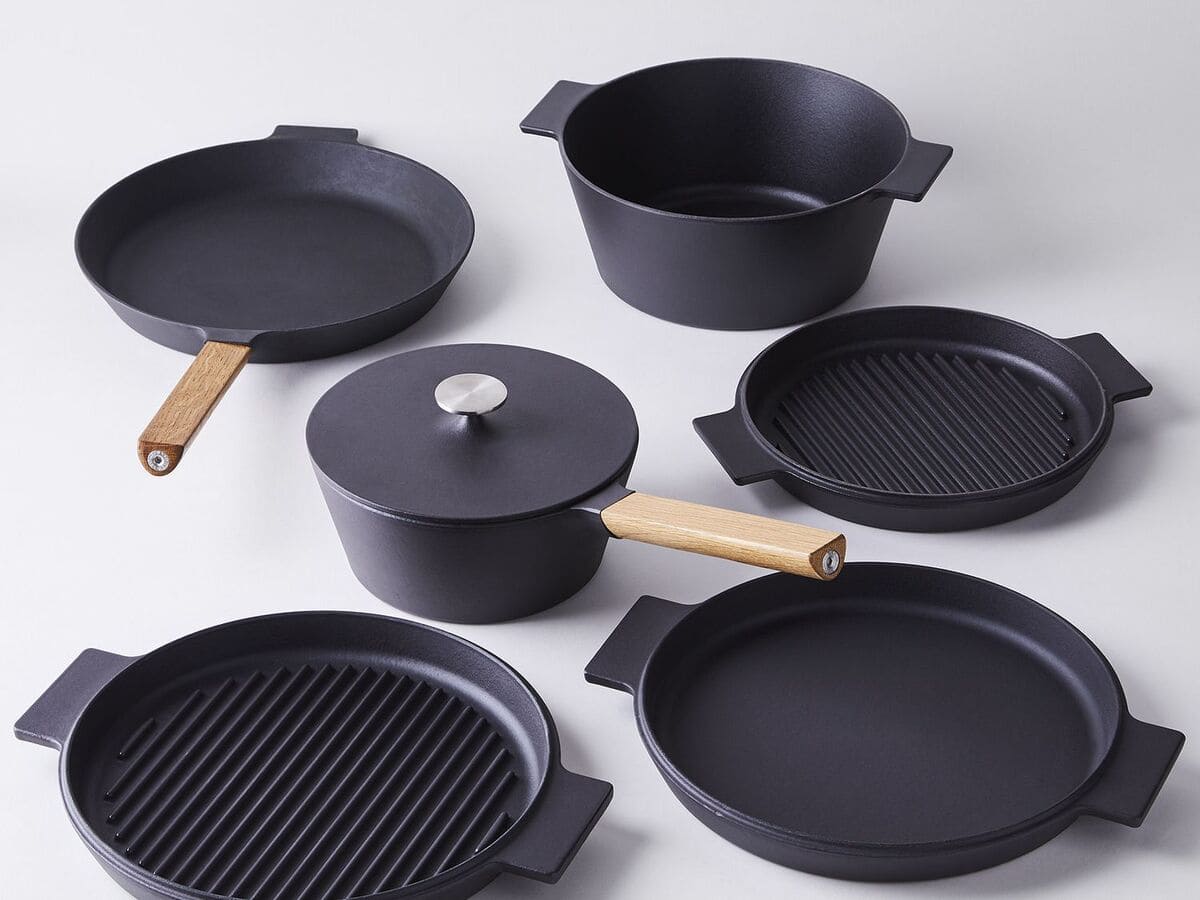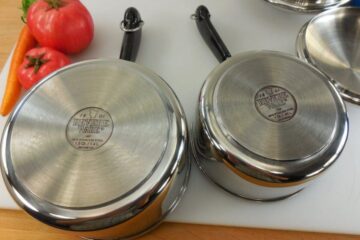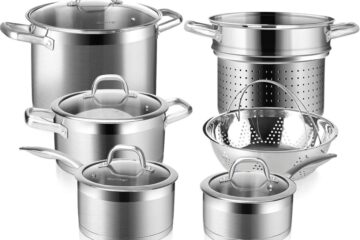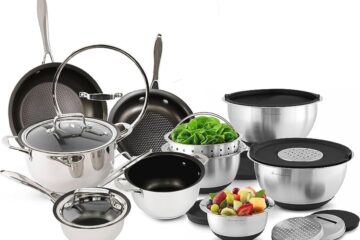Cast-iron cookware is a staple in many kitchens due to its durability and versatility. However, cleaning and maintaining cast-iron cookware can be a bit of a challenge for some. If not cleaned properly, cast-iron cookware can rust, lose its non-stick seasoning, and become unusable.
To keep cast-iron cookware in top shape, it is important to know how to clean it properly. While there are many methods out there, it is important to stick to those that are safe and effective. In this article, we will explore some of the best ways to clean cast-iron cookware, including how to strip a cast-iron pan, how to clean a Dutch oven, and how to use products marketed specifically for cast iron. By following these tips, readers can ensure that their cast-iron cookware lasts for years to come.
Why Clean Cast-Iron Cookware?
Cast-iron cookware is a popular choice for many cooks due to its durability, versatility, and non-stick properties. However, without proper care and maintenance, cast-iron cookware can become dirty, rusted, and lose its non-stick properties. That’s why it’s important to clean cast-iron cookware regularly.
Here are a few reasons why cleaning cast-iron cookware is essential:
Prevents Rust
Cast-iron cookware is prone to rusting if it’s not cleaned and dried properly. Rust can affect the cookware’s performance and make it unsafe to use. Cleaning cast-iron cookware after each use and drying it thoroughly can prevent rust from forming.
Maintains Non-Stick Properties
Cast-iron cookware develops a natural non-stick surface over time with proper seasoning. However, food particles and oils can build up on the surface, making it less effective. Regular cleaning helps to maintain the non-stick properties of the cookware and prevent food from sticking.
Removes Bacteria
Food particles left on the surface of cast-iron cookware can harbor harmful bacteria that can cause food poisoning. Cleaning the cookware thoroughly after each use can help to remove bacteria and prevent the spread of foodborne illnesses.
Improves Performance
Clean cast-iron cookware heats up more evenly and retains heat better than dirty cookware. Proper cleaning and maintenance help to improve the performance of the cookware and make it more effective for cooking.
Preparation
Before cleaning cast-iron cookware, it is important to prepare the necessary supplies and heat the cookware properly. This section will provide a few tips on how to prepare for cleaning cast-iron cookware.
Gather Supplies
To clean cast-iron cookware, you will need the following supplies:
- Hot water
- Sponge or stiff brush
- Mild dish soap (optional)
- Salt (optional)
- Paper towels or lint-free cloth
- Cooking oil (vegetable oil, canola oil, or flaxseed oil)
Heat the Cookware
Before cleaning the cast-iron cookware, it is important to heat it properly. This will help loosen any stuck-on food and make it easier to clean.
To heat the cookware, follow these steps:
- Place the cast-iron cookware on the stovetop over medium heat.
- Let the cookware heat up for a few minutes until it is warm to the touch.
- Turn off the heat and let the cookware cool down slightly before cleaning.
By heating the cookware before cleaning, you can avoid damaging the seasoning and make it easier to clean any stuck-on food.
Cleaning Methods
When it comes to cleaning cast-iron cookware, there are a few different methods to choose from. Each method has its own benefits and drawbacks, so it’s important to choose the one that works best for you.
Salt Method
The salt method is a popular way to clean cast-iron cookware. To use this method, simply sprinkle coarse salt onto the surface of the pan and use a paper towel or a clean, dry cloth to scrub away any food residue. The salt acts as an abrasive, helping to remove any stuck-on food without damaging the surface of the pan. Once you’ve finished scrubbing, rinse the pan with hot water and dry it thoroughly with a clean towel.
Oil Method
The oil method is another popular way to clean cast-iron cookware. To use this method, simply pour a small amount of oil onto the surface of the pan and use a paper towel or a clean, dry cloth to scrub away any food residue. The oil helps to loosen any stuck-on food, making it easier to remove. Once you’ve finished scrubbing, rinse the pan with hot water and dry it thoroughly with a clean towel.
Soap Method
The soap method is a controversial way to clean cast-iron cookware. Some people believe that using soap will damage the seasoning on the pan, while others believe that it’s perfectly safe to use soap as long as you rinse the pan thoroughly and dry it immediately afterwards. If you choose to use the soap method, simply apply a small amount of soap to the surface of the pan and use a sponge or a soft-bristled brush to scrub away any food residue. Once you’ve finished scrubbing, rinse the pan with hot water and dry it thoroughly with a clean towel.
Maintenance Tips
Seasoning
To keep your cast-iron cookware in good condition, seasoning is a crucial step. Seasoning is the process of creating a non-stick surface on the cast-iron by applying a layer of oil and heating it. Here are a few tips to consider when seasoning your cast-iron cookware:
- Always use unsalted, flavorless oil, such as vegetable oil or flaxseed oil.
- Apply a thin layer of oil to the surface of the cookware using a paper towel.
- Preheat your oven to 375°F and place the cookware upside down on the middle rack.
- Bake for an hour, then turn off the oven and let it cool down completely before removing the cookware.
Storage
Proper storage is also essential to keep your cast-iron cookware in good condition. Here are a few tips to consider when storing your cast-iron cookware:
- Always make sure your cookware is completely dry before storing it. Moisture can cause rust to form.
- Store your cookware in a dry place away from moisture and humidity.
- Do not stack your cast-iron cookware on top of each other, as this can damage the seasoning.
- If you need to stack your cookware, place a paper towel or cloth between each piece to protect the seasoning.
Conclusion
Cleaning and caring for cast-iron cookware is not as difficult as it may seem. With the right tools and techniques, anyone can keep their cast-iron cookware in great condition for years to come.
First and foremost, it’s important to clean cast-iron cookware properly. This means washing it by hand with a small amount of soap and a pan scraper for any stuck-on food. For stubborn bits, simmering a little water for 3-5 minutes can help loosen them up.
After cleaning, it’s important to dry the cookware thoroughly to prevent rust. This can be done by placing it on a stovetop over low heat or in an oven set to 350°F for 10-15 minutes.
Once the cookware is dry, it’s time to season it. This involves applying a thin layer of oil to the surface of the cookware and heating it in the oven for an hour. This helps to create a non-stick surface and protect the cookware from rust.
In addition to proper cleaning and seasoning, it’s important to store cast-iron cookware properly. This means keeping it in a dry place and avoiding stacking it with other cookware, which can cause scratches and damage the seasoning.
Overall, taking care of cast-iron cookware is a simple process that can be done with just a few basic tools and techniques. By following these steps, anyone can enjoy the many benefits of cooking with cast-iron for years to come.



